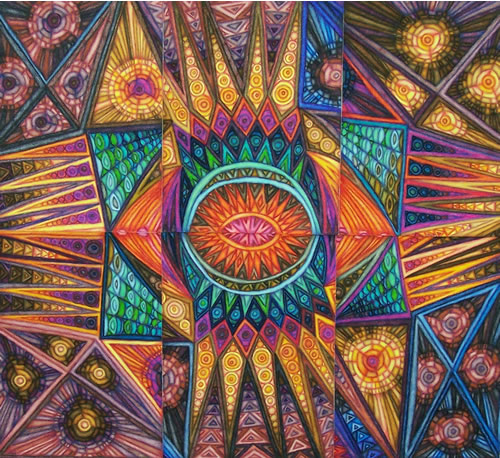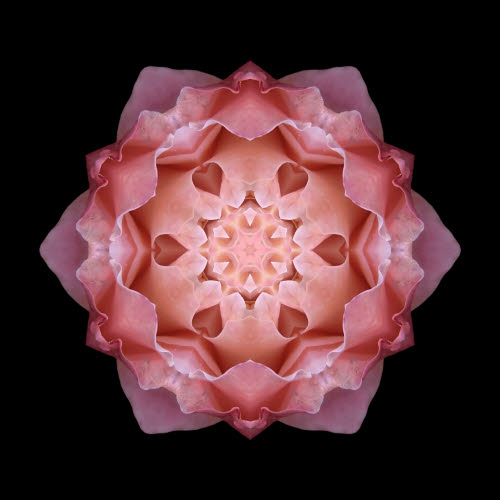
White Lily III
A year ago, an online magazine called Science Creative Quarterly, physically located at the University of British Columbia, ran a contest using 12 of my flower mandala images, one for each month of the new year. Readers were instructed to create something in response to one or more of them. The response the judges determined to be of the greatest interest would receive a prize.
We expected poems, brief essays, and other pieces of writing, and that’s what we got — except for the contest winner, James M. Johnson, who composed this musical accompaniment. I present it here with his permission.
Click here to listen to or download James M. Johnson’s “White Lily III”
(NOTE: This may take a few minutes — it’s a 10MB file)
Here’s what James had to say about the way he went about composing his piece:
I based this composition upon a tonal row consisting of six diatonic notes, using familiar serial composition techniques which allow only strict variations of the tone row (direct, retrograde, inversion, and retrograde inversion). The composition was originally scored as a twelve-bar, twelve voice sketch in the Finale program, then exported via MIDI to Reason 2.5, where the various rowforms were cut, pasted and fed to synthesizers for arrangement and manipulation. The only instrumental exception to this scheme is that I allowed myself the luxury of importing a finger cymbal sample, in order to provide rhythmic propulsion at specific times. The finger cymbals felt idiomatically appropriate for the piece.
In addition to the strict melodic rules, I imposed a strict hierarchy of rhythmic subdivisions as well. The row is represented in sixteenth, eighth, quarter, half and whole note phrases. Again, I allowed for one luxury, in the form of a melody which, based on the tone row, asserts rhythmic freedom. For me, the hierarchy of the repetitive subdivisions reflects the fractal nature and symmetry of the image of the white lily. During the arranging and mixing of the work, I allowed the animated sixteenth-note parts to emerge and submerge, much the way one’s eye tends to roam across the symmetry of the flower, focusing briefly on one pattern, then the next, then attempting to encompass the form as a whole.
I would like to add that it has been a joyful experience for me to create this piece.
James M. Johnson
Since this contest, James and I have talked about collaborating on a mixed-media presentation (which is likely to debut in this space). I’m looking forward to it. Much art-making is a solitary activity, it need not be. Collaboration, at least in my experience, has been perhaps the most rewarding form of art-making I’ve engaged in. Whether done in person or at a distance, it can produce work in which the whole is truly greater than the sum of its parts.
How many of you out in cyberspace have had the rich experience of collaborating on some form of creative work? How have you found it to be different than working alone? Share your experiences of collaboration in the discussion group post referenced below.
More anon,
David
Discussion:
White Lily III, the Diatonic Scale, and Artistic Collaboration
Art, Healing, and Transformation group
Flower Mandalas Project group
White Lily III image © 2007, David J. Bookbinder
White Lily III musical composition © 2007, James M. Johnson

